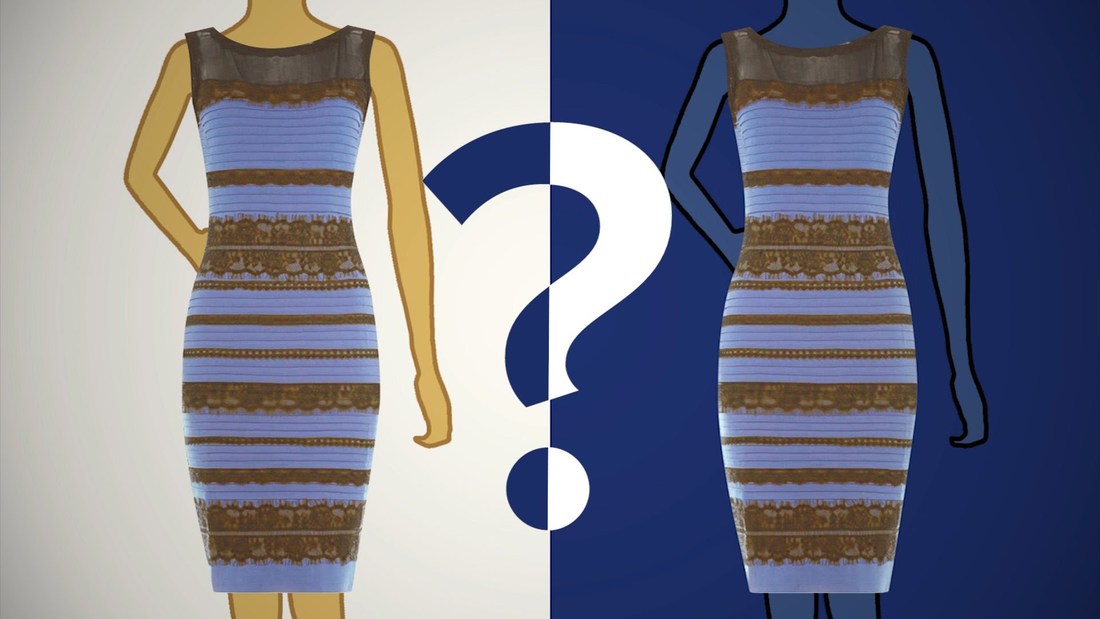My Top Ten Marketing Mistakes - And Why They Worked - The Picture That DIDN'T Say a Thousand Words11/22/2022 In 2015, very new to the PR game in Phoenix, I had signed on a new PR client: A popular and talented photographer - who just so happened to be very handsome and always fashionably dressed. He had decided to branch out into a new venture: Male Makeovers.
It was a clever idea, and when I pitched it to a large local publication, they immediately jumped on the story. The writer assigned to the piece did a wonderful job with the subsequent article. We were “good to go,” in terms of writing, but the editor needed before and after photos - and he needed them quickly. The client sent me a “before” photo of himself showing an attractive guy, casually dressed in a polo shirt, hair slightly mussed – a bit rough around the edges. Perfect! I then received the after photo to illustrate the result of a male makeover. In the picture, he had his hair smoothly combed back and was wearing a dress shirt, tie, and glasses. The Problem: He looked better in the BEFORE photo than in the after photo! I thought that I might be wrong about this, so I sent both photos to the writer. She felt the same way. What to do? We were under a deadline, and he (the client), felt it was a good photo. I had to submit those images. The Mistake: Due to the nature of the article, I knew that the “after” photo could make or break the piece. If it was a fabulous photo, it would sell the story to the public immediately and possibly even attract national attention. To this day, I wish I had been adamant about him retaking that photo. The client may have been offended, or he may have not had the time to redo it, but we could have gotten a more powerful image. While well-written, the story didn’t attract much interest (which is unfortunate because it was good). It ran on the covers of a couple of community editions of the paper, but not in two other zones as promised. Why? The piece just wasn’t that strong given the photos, so it was an editorial decision. The client was upset about this and contacted the paper to complain. The writer and editor let me know about the complaints and emails were flying through cyberspace. I was as tactful as possible and did all I could to defuse the situation. Things blew over. Why This Worked: The editor and writer were impressed with the way I handled the situation. When it was time to pitch a story idea for another client, a new STEM engineering program for kids, the editor assigned one of his best new writers and did a business profile. The resulting article was shared 375 times on social media and the company’s programs sold out. Of course, this is of no consolation to the other client, but this is a reminder that being gracious can pay off – and never, ever, be afraid to speak up if you think something can be improved. The Moral of this Story: Images have never been more important in terms of marketing and PR usage. Today, you simply must have good hi-res visuals that can illustrate a story and can be used digitally and in published pieces. Photography is one thing you do not want to skimp on.
0 Comments
My Top Ten Marketing Mistakes – And Why They Worked Part 3 - The Curious Case of the Cow Taffy11/14/2022 In the early 2000s I was working as a Regional Account Manager of a consulting firm based in the Dallas area. I traveled often, appearing at large trade shows across the country targeting petroleum distributors.
My company had an upcoming big trade show in Las Vegas. I needed some inexpensive treats to give to the people who stopped by our booth. I asked our very creative office manager to find some giveaways. I’m not sure where, but she discovered delicious taffy candies that also happened to have the coloring of a cow. This was a clever and cost-effective find. and fit in perfectly with the fact that our company was based in Texas. At the show, I arranged our marketing collateral on the table with the taffy casually strewn about. They were so cute and unusual that people would stop by just to see what they were. The Mistake: Do you know what happens when you eat taffy? You can’t talk! I would be chatting, prospects would pop a piece of candy in their mouths, and they were completely unable to speak for a couple of minutes. (I still wonder if anyone needed dental work after that show.) Why This Worked: I soon realized that I had a captive audience! I was able to give the spiel about our services without interruption - or objection. This is what I call an HMA - a “Happy Marketing Accident.” Moral of this Story: You do not, I repeat, you do not have to spend a lot of money on expensive branded giveaways. Sometimes the cheapest items can produce a great result and make your company stand out from the crowd. Just be sure to choose something that fits into the theme of your company, show, and target audience. In 2007, I was working for a popular Santa Fe nonprofit when the Executive Director announced that we would be hosting an art auction to benefit our programs. There was only a short amount of time to promote the event, which was to feature the donated works of 100+ local artists.
In my role, I needed to attract the attention of the most prominent local newspaper in the hopes they would cover the event. None of their arts and entertainment reporters, however, were returning my calls. Zip. Nada. Nothing. Now what? Ever mindful of our buck-fifty nonprofit marketing budget, I discovered some small, branded coffee cups in a storage room and had an idea. Perhaps a weird idea, but what the heck. I had to try something - the clock was ticking! I placed event tickets with an invitation into the cups and decided to take matters into my own hands. I was going to stop by their office to introduce myself, drop off the (albeit somewhat cheesy) gifts, and tell them all about our event. Well, when I got to their offices near the Santa Fe Plaza no one was there! As I looked around for human life forms, I stumbled upon a wall of mailroom inboxes. Bingo! I squeezed the cups into the cubbies of the reporters and snuck out the same way I had come in. FYI: As I was wearing my customary 3-inch heels on the brick floors, I wasn’t exactly stealthy. Why This Was a Mistake: New to the PR game, I didn't know that reporters are often told to refuse gifts to avoid compromising journalistic integrity (although some publications and media outlets are more loosey goosey about this than others). My little gifts could have easily offended the people I was trying to reach, and, even worse, they could have called my boss to complain! If you don’t know a publication’s policy on accepting gifts, be sure to inquire first to avoid putting a journalist in an uncomfortable situation. At the very least, ask permission before handing a journalist a gift. Why this Worked: I’m honestly not sure if this little stunt was the reason why, but the publication DID cover the auction, and the quickly thrown together event was a success. They became interested in our other functions and from that point forward the publication was more receptive to my pitches. The (Marketing) Moral of this Story: When you are not getting through to a media outlet, or even a potential client, try a different approach. This will help your business or nonprofit stand out from your competition. Be creative. Be different. Be memorable. My Top Ten Marketing Mistakes (And Why They Worked) Part 1 - The Dragon and the Radio Host10/31/2022  In 2008, while working as the Marketing and Communications Director of a Santa Fe nonprofit, I was informed that our agency would be co-hosting a Renaissance Fair at El Rancho De Las Golondrinas – a beautiful living museum located just south of the city. As part of the event promotion, I participated in multiple radio interviews in Santa Fe and Albuquerque. The day before the event (and let me tell you, putting on a Renaissance Fair is a BIG deal with many working parts), I was to be interviewed on a popular drive time show on KSFR, a public radio station, in Santa Fe. The host was Diego Mulligan (gotta love that name). When you appear on a show of this type you are forbidden to talk about ticket prices. The host told me that, in no uncertain terms, I could not mention the fact that our tickets were only $10. The admission of the competing event that weekend, an airshow, was substantially more. One of the attractions at our fair was to be a 7 ft tall Dragon, an elaborate and super cool costume created by a popular local designer. During the show the host and I chatted about the scheduled festivities which included jousting, belly dancers, a beer garden, and, of course, a Renaissance Fair staple, turkey legs. (Speaking of turkey legs, you have no idea how hard it can be to find a turkey leg vendor in New Mexico, but that can be a whole other blog.) As the interview began to wind down, I knew I had to come up with something that would really make people want to go to our event. After all, this was the culmination of the hard work of hundreds of volunteers, and a special occasion for the community. I didn’t want to let them down, and a lot of people listened to this show. At a few points during the discussion, I could tell the host thought I was going to mention the low-ticket price – which was a huge selling point. He had his finger hovering over what I like to call the “Golden Buzzer” to cut me off at any time. With only seconds to spare, I suddenly blurted out: “You can see an airplane any day, but you can’t always see a 7 ft tall dragon!” That made the host crack up, and he told me right after the show that I had a great radio personality. The event ended up being a huge success with over 4,300 attendees, which wasn’t too shabby for a first-time event. The Santa Fe Renaissance Fair is now a popular annual event. Why This Was a Mistake: Technically speaking, you should never disparage your competition. It’s tacky, and it also brings attention to your competitor, when you want to keep the focus on your product or event. Why It Worked: It brought a little levity to the conversation, and it was a nice parting shot. You always want to finish up an interview with something memorable. As a public relations representative, I’ve arranged over 100 free (called “earned media”) television segments for small businesses and nonprofits. Free segments happen when a story is deemed newsworthy to a producer and is of interest to viewers.
Paid segments are usually taped in advance and can be edited - but they are also often very expensive. When you work with businesses (like I do) that typically don’t have huge budgets, earned media the way to go. A lot of work goes into a TV segment behind the scenes. A press release and “pitch” with images are sent to a producer and IF their interest in piqued, a segment is coordinated – either at the media outlet’s studio or on location. A lot of things have to happen in order to get that 3.5 minutes worth of airtime, and it usually happens fast. When a TV producer wants you on a show, it often happens within a few days. Hundreds of businesses are vying for that precious time. If a station is interested in your story, you need to jump on it or risk losing several thousand dollars worth of free exposure. You snooze, you lose. Being on TV can be exciting, and a bit nerve wracking, but something often happens when a person sees themselves in a segment for the first time. So, you’ve just been on your local network’s morning show talking about a product, service or event. What usually happens next: “Wow, that was so much fun. When can I do it again???” Then, you get to watch the clip: “OMG, I was horrible!” Then, “Do I really look like that?” or “Oh, I forget to mention …” happens every time. I always warn clients that they may be shocked the first time they see themselves on TV. It’s human nature. Let’s face it – we are ALL so hard on ourselves, especially women. But what you see, or think you see, is not what OTHERS see. You are looking at the flaws - others don’t see the flaws that you may be imagining. When I often tell clients is this: This first time you see your segment you will probably hate it. The second time you watch, you will think “hey, that wasn’t so bad.” The third time, you will say, “you know, I was really pretty good.” Like anything in life, the more you do it the better you get. I’ve found that even with experienced spokespeople, some key piece of information is forgotten. A few minutes goes by very quickly! Hey, none of us are perfect. Always be sure to purchase your segment both for your archives and to rewatch it so you can critique your performance and see what you can do better next time. I recently chatted with a very talented friend who owns a theatrical group that performs interactive murder mysteries at restaurants and corporate events. “Suzanne,” he said, “I don’t understand it. I was getting lots of leads for my shows but everything just stopped.” I asked him if he had tried the Facebook ads I had recommended. “Yes, but those things don’t work and they’re expensive.” I then asked when he stopped the ads. He said January. Then I asked when the activity stopped. He said January. Perception is a funny thing. Another case in point: I was at a networking meeting a few years ago when a lady sat next to me. She began to discuss a community garden she was working on. I said I thought that was a wonderful idea and asked her if the media knew about it. She immediately said: “Why, EVERYONE knows about it – it’s been all over the news.” At that very moment (and you can call this marketing serendipity), another lady sat at the table and said: “What’s happening with the community garden? I haven’t heard anything about it.” Perception is a funny thing. How can these business owners be so out of touch with the reality of their marketing? It’s because we are often so tied to our own filters and our perception of the world as it relates to us – or our businesses. Perhaps your company is not on social media. You don’t like it. You think social media is stupid and that it’s a time waster. No one you know is on social media. For this reason, you don’t have a social media presence and yet you can’t understand why your competitors are doing well - and you are not. Well, I hate to tell you this, but BILLIONS of people are on social media and every time the news says it’s on its way out more people get onboard. Every business needs to be on social media even if it’s on a limited scale. Period. This is especially true for B2C (business to consumer) entities but it's also fabulous for B2B operations. Or, let’s say you don’t like email marketing. You hate sending emails and you hate receiving them. You say email marketing is dead. Because YOU feel this way, you never send e-newsletters. Did you know that email marketing still has one of the highest ROI’s? The ROI for email marketing is, on average, $43 for each dollar spent. Not too shabby and it’s inexpensive to do. The KEY to all marketing is frequency and consistency. Traditional marketing research used to say that a consumer had to “see” you at least 12 times before they start to pay attention. I actually think that number is much higher now since we all barraged with so much information on a daily basis. Why do you think radio and TV commercials are played over and over and over again? Big advertisers know the all encompassing power of repetition to cut through the crowd. If you are just sending out an occasional eblast, or doing a social media post every now and again, you are not gaining momentum for your marketing. When you are on various platforms frequently and consistently, what you may think is not working is – it’s in the building phase. This can take as little as two months if you are being very aggressive, but the average is around 6 months for campaigns to start to “gel” and for people for start paying attention. Perception is a funny thing but you can challenge YOUR perceptions - and succeed. bove photo by Everardo Keeme Photography of Murder Ink Productions
I was working with a theatrical group who was producing and performing hilarious interactive murder mystery shows in 2015. I needed high resolution images to submit with press releases and for use on social media to promote their business. Strangely enough, these amazingly talented actors only had grainy pics of their shows from the 1980’s! I quickly scheduled a professional photo-shoot to get some publicity shots. The second I saw the resulting photos I knew we had a hit. Within weeks I was obtain to obtain 3 TV segments and two articles in local publications for the group - and their show at a local dinner theater venue sold-out. It has NEVER been more important to have good images to promote your business! I’m not talking taking selfies with your iPhone (although the quality of cells phone cameras is much better these days) – you MUST have solid, high-resolution, well-lit, professional images to support the story of your business. Why? Public Relations and Social Media are VISUAL mediums. Busy producers or editors often only have seconds to scan a press release. What can really “sell” your business is a photo that tells your story quickly. FYI: If I submit a “bad” (blurry, low-res, poorly staged) photo to a media outlet, even if the story idea is about the most imaginative product or service in the world, it most likely won’t be “picked up.” They are going to take one look and say “Next!” On Social Media images are equally – if not more – important. Great photos create engagement! With millions of posts being produced daily, your brand has to stand out with images that also support your overall message. You want people to see your post and stop scrolling. A cool image that supports your brand is powerful with a Capital P! Tip: Cell phone cameras can be fine when you are taking photos at networking or other events to post on social media platforms. For images to accompany press releases, professional photos work best. So start clicking! The more images you have the better. If you can’t afford a professional photo shoot, invest in a good camera. Let your images do the talking for you!  Remember during the 2014 Winter Olympics when skier Bode Miller became emotional when asked questions about the death of his brother? As he became distraught and tearful, the reporter kept asking more questions in an interview that was heartbreaking to watch. Right after the interview aired it popped up in my browser. Many commented that the interview was inappropriate and were critical of the reporter. I couldn’t help but chime in: “There was a time delay. The network could have chosen to not air the interview. They didn’t pull it because they knew it would boost the ratings and that it would blow up on social media.” I believe (or want to believe), my response was more eloquent that this - but you get the drift. They COULD have pulled the interview. They had time to do so. They didn’t and it DID get a lot of attention on social media! My post became a “featured comment,” drawing around 60 likes or so on MSNBC, and my website received over 200 hits in a short amount of time (which was a lot at the time for my teeny tiny site). I was astounded. Controversy. Love it or hate it, it can be very effective tool in your marketing and communications arsenal. Now, don’t get me wrong. When I posted my comment it was simply because I was honestly appalled by what I had seen and felt Miller (who after the fact was very supportive of the reporter) was exploited. I had no idea that it would draw any attention. Why Controversy Works: With the seemingly “anonymity” of the internet people are becoming more vocal (even "snarky") online more than ever before. As marketers compete for whatever engagement they can get, controversial content is being used more frequently for shock value and to get a reaction. Say Yes to the Dress! A great positive example of using controversial content to increase engagement was the “dress” debate in 2015 (see photo above). All over social media networks some saw the dress as blue and black - while others saw the dress as white and gold. It was EVERYWHERE! Why did it get so much media play? It created a viral buzz because people could comment and disagree. In other situations I’ve discovered that controversy can even be used to right a wrong. In 2016, the family of a very prominent (late) politician alerted me that their grandfather had been omitted from the cover of a popular magazine which highlighted the most influential individuals in Arizona history. I contacted the editor on their behalf and he agreed that it was a slight. This “complaint” resulted in a gorgeous full-length article and the family was very happy. Caution: Just keep in mind that using controversy simply to get attention can be a dangerous thing. Yes, you may get more website or blog hits, but you also risk offending some (or all) of your followers. Want to try “Controversy Marketing” to build your brand? Learn more in this Forbes article: https://www.forbes.com/sites/ajagrawal/2016/01/08/the-pros-and-cons-of-controversial-marketing/#36e956bd3e51 May the Marketing Gods be with you! The other day I was speaking to a business owner and they told me, “I don’t know why I’m not getting any sales.” I asked her how she was promoting her high-end services for professionals. She said, “Well, I’m on Facebook all the time and Twitter. I’m on Instagram. I’ve been publishing posts on LinkedIn but nothing is happening." I’m writing this because I hear this all the time - business owners who spend all their precious time on Social Media. Results aren’t showing but they continue to pump out information day after day, month after month. There is that OLD saying, “Insanity is doing the same thing over and over and expecting a different result.” Yada, yada, yada. If you are on Social Media constantly and nothing is working – stop. Take a break. I know it can be addictive, it can be fun, but it may also be a crutch stopping you from exploring other creative options to market your business. Don’t get me wrong - Social Media is one of the most ingenious marketing tools invented. It’s a quick and free way to get information out in a short amount of time. It’s easy to use. Anybody can do it. It’s wonderful for small businesses with limited marketing budgets. It can be fabulous for event promotion. With compelling images and clever messaging it can be extremely effective. For some B to C businesses it’s a perfect fit and since Social Media is so accessible and easy to use, everyone has also become an “expert.” The problem is, the perfect client for your business may not even be “Social.” I know many highly successful people who are not on Facebook, LinkedIn or any other social platform. They have lots of money to spend but if you are only on Social Media they aren’t going to spend it with you. I also know droves of people getting off of Social Media. As the economy improves they are too busy making money to spend their days checking status updates. The wealthy CEO you may be trying to reach doesn’t have time to be constantly checking their Facebook account. Are you curious about other available marketing tools? Reach out to us today for our free “Is Social Media the Best Fit for Me?” cheat sheet. One of our clients, an award-winning Scottsdale children’s book author, was recently on a popular local TV show promoting a backpack special offer to include the book, puzzles and other items. Two weeks later she had not received a single backpack sale.
A lady in Mesa then contacted the author to let her know that she had been trying to buy her book from the website but kept getting an “internal server error" during check-out. What was going on? We investigated further and discovered the backpack sales page had been visited 50+ times and there were also “abandoned” carts for other products! Working with the web designer we identified the issue, tested and retested the check-out process, and now online ordering is working properly on the site. Problem is, those customers wanting to buy are long gone and this also begs the question: How long had this been going on? How many people had tried to purchase but gave up? If it wasn’t for this lady in Mesa we may not have discovered the issue for some time. (Note: The website had been recently optimized so something may have gone awry during that process.) If you are selling a product from your website, make sure to check your “check-out” process for each product frequently. If you are implementing a marketing campaign and results are not showing, ask yourself the following:
Test the online sales process yourself and get feedback from friends and associates. Make sure everything is as streamlined as possible. If product check-out is cumbersome or confusing it can make customers abandon the buy. We live in an Amazon world of seamless online buying - people are expecting an easy way to purchase. Keep it simple and "check the check-out." Questions? Call us today at (602) 466-3333 for a free consultation. |
Author:
|
|
Copyright 2024
Jameson & Associates All rights reserved. |
Jameson & Associates (602) 466-3333/(480) 721-3629
|




 RSS Feed
RSS Feed